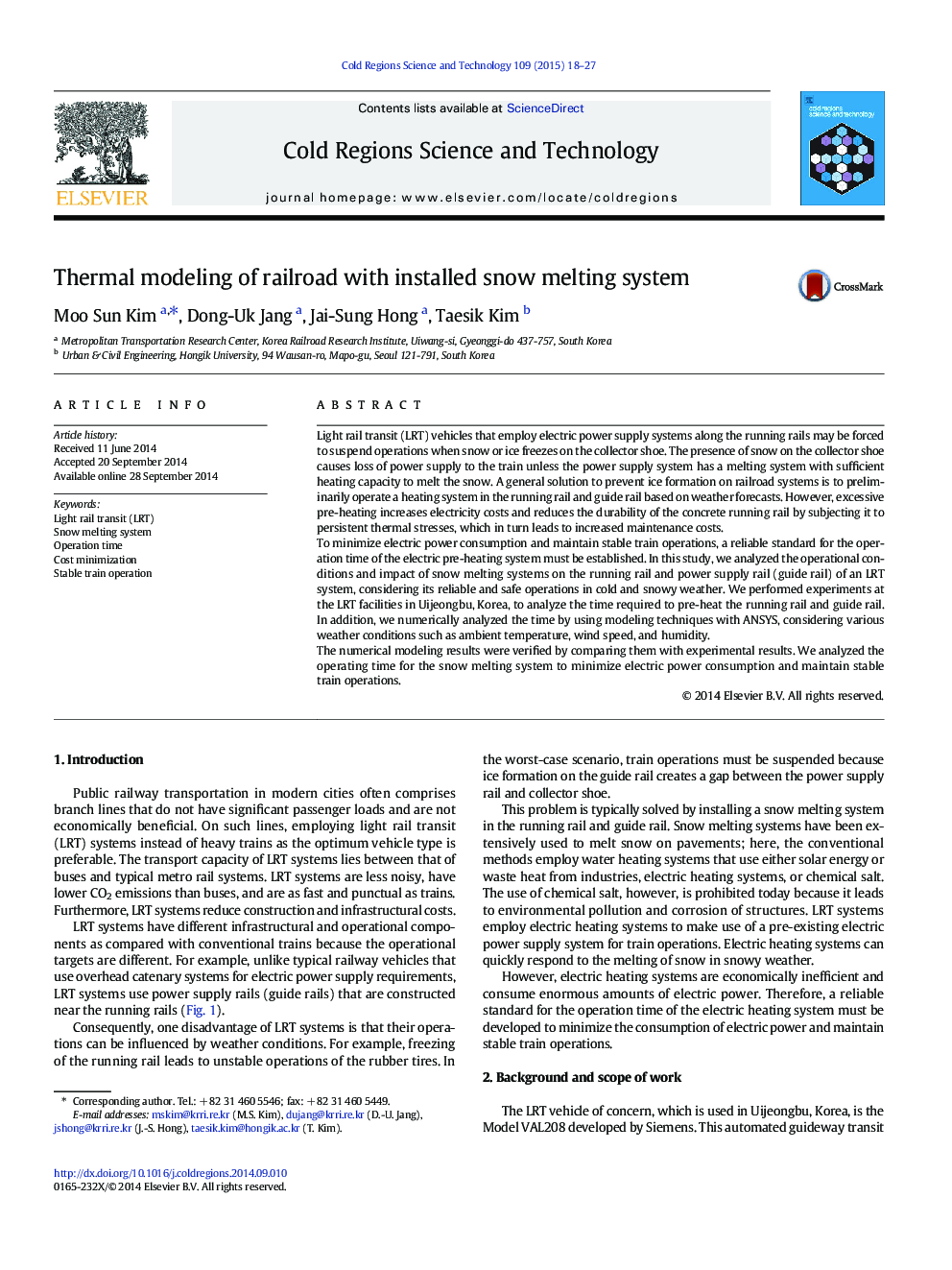| Article ID | Journal | Published Year | Pages | File Type |
|---|---|---|---|---|
| 6426908 | Cold Regions Science and Technology | 2015 | 10 Pages |
â¢Numerical modeling for railroad with snow melting system is proposed and verified by experiment.â¢Methodology for modeling considering ambient temperature, wind and humidity below zero-degree is researched.â¢Preliminary operation standard of the heating system is obtained for stable train operations.â¢Maintenance cost for heating system can be saved based on the preliminary operation standard.
Light rail transit (LRT) vehicles that employ electric power supply systems along the running rails may be forced to suspend operations when snow or ice freezes on the collector shoe. The presence of snow on the collector shoe causes loss of power supply to the train unless the power supply system has a melting system with sufficient heating capacity to melt the snow. A general solution to prevent ice formation on railroad systems is to preliminarily operate a heating system in the running rail and guide rail based on weather forecasts. However, excessive pre-heating increases electricity costs and reduces the durability of the concrete running rail by subjecting it to persistent thermal stresses, which in turn leads to increased maintenance costs.To minimize electric power consumption and maintain stable train operations, a reliable standard for the operation time of the electric pre-heating system must be established. In this study, we analyzed the operational conditions and impact of snow melting systems on the running rail and power supply rail (guide rail) of an LRT system, considering its reliable and safe operations in cold and snowy weather. We performed experiments at the LRT facilities in Uijeongbu, Korea, to analyze the time required to pre-heat the running rail and guide rail. In addition, we numerically analyzed the time by using modeling techniques with ANSYS, considering various weather conditions such as ambient temperature, wind speed, and humidity.The numerical modeling results were verified by comparing them with experimental results. We analyzed the operating time for the snow melting system to minimize electric power consumption and maintain stable train operations.
